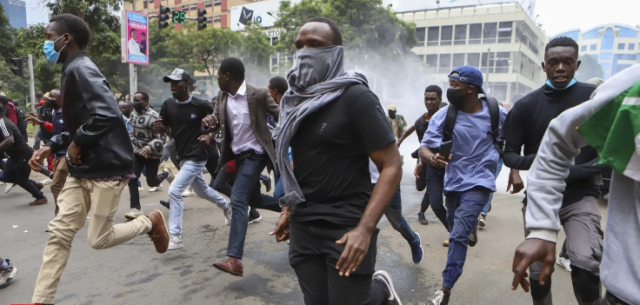A man died following a mass demonstrations against proposed tax hikes in the Kenyan capital, police said Friday.
The protest according to report, left above 200 people injured.
A police watchdog said it was investigating allegations that the man was shot by police after Thursday’s demonstrations in Nairobi, the second this week.
The protest led largely by young Kenyans, began in Nairobi on Tuesday before spreading nationwide.
They have been galvanised by widespread discontent over President William Ruto’s economic policies as many people already grapple with a cost-of-living crisis.
Thursday’s demonstrations in Nairobi were mostly peaceful, but officers fired tear gas and water cannon throughout the day in an attempt to disperse people who gathered to protest near parliament.
The Independent Policing Oversight Authority (IPOA) said Friday it had “documented the death” of a 29-year-old man, “allegedly as a result of police shooting”.
“The Authority has this morning launched investigations into the fatal shooting,” the IPOA said in a statement.
According to a Nairobi police report seen by AFP, a 29-year-old man was taken to hospital in Nairobi’s central district at around 7:00 pm (1600 GMT) on Thursday “unconscious with a thigh injury” before “succumbing” to his injuries, without giving further details.
A spokesman for Amnesty International Kenya, Mathias Kinyoda, said that “one demonstrator was shot yesterday in the CBD (central business district) as he was trying to run away from the police”.
Kinyoda said the person had died.
He said that the shooter “was wearing plain clothes but he was accompanying the police”, and called for an investigation.
The proposed taxes were projected to raise 346.7 billion shillings ($2.7 billion), equivalent to 1.9 per cent of GDP, and reduce the budget deficit from 5.7 per cent to 3.3 per cent of GDP.
The government has now targeted an increase in fuel prices and export taxes to fill the void left by the changes, a move critics say will make life more expensive in a country battling high inflation.
AFP




















